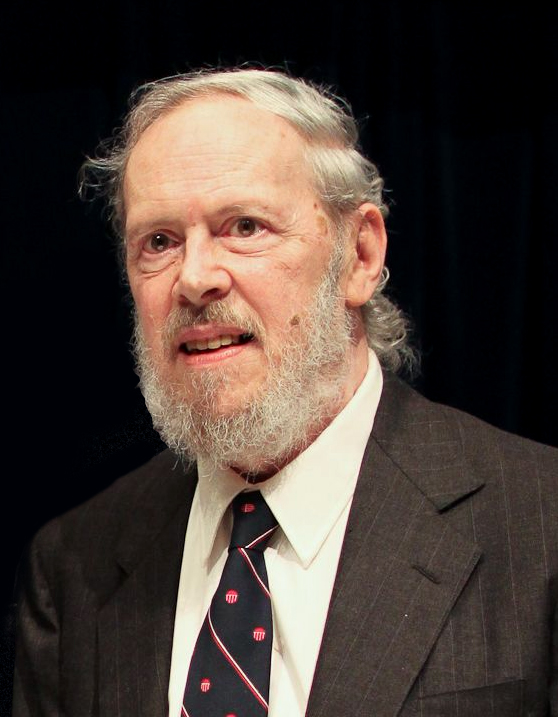History of C-Programming:
C Programming language was designed by Mr.Dennis Riche in the bell laboratories of AT&T (American Telephone & Telegraph) in 1972. The Bell laboratories is located in the U.S.A. it is developed as a problem solver and a supplement of B, BCPL, etc.,
 |
| Dennis Ritchie |
Features of C-Programming:
- Very simple to learn
- C Language is a Middle-Level language
- It has a very less number of keywords only 32 in number.
- C language is block-structured.
- C language consists of structures that are first user-defined data types
Characteristics of C-Programming:
- It is strictly case sensitive.
- Every program statement shall end with a semi-colon(;) which is also called a line terminator.
- Every compound statement shall be given within flower braces({}) which are also called delimiters.
- Functions should be followed by parenthesis().
Tokens:
- Each symbol or word or any other indivisible part of a program is said to be a token.
- C provides the following tokens: Keywords, Operators, Comments, Identifiers, Literals.
Keywords:
- A keyword is a reserved word of a programming language, which intercept into a particular predefined task.
- C has only 32 keywords, and they are auto, double, int, struct, break, else, long, switch, case, enum, register, typedef, char, extern, return, union, const, float, short, unsigned, continue, for, signed, void, default, goto, sizeof, volatile, do, if, statistic, while.
Operators:
- The operator is a special symbol used to indicate a particular task.
- Eg: +,-,*,/
Comments:
- A comment is special non-instructional text. It is given to provide an explanation .in the program
- Single Line comment starts with //. Eg:- //this is a comment
- Multi-line comments start with /* and end with */. Eg: - /*This is a Multi-Line comment */
Identifiers:
- A user given name to variable, function, structure, union, or enumeration.
- It can be alpha-numeric.
- It shouldn't start with a number.
- It should not match any keyword.
- It should not contain spaces.
- It shouldn't contain special characters except for underscore(_)
- It can be of any length.
- Valid - Length, str_123,......
- Invalid - Roll no, 123red,.......
Literals:
- Any constant value embedded in a program is literal.
- Literals are classified into numeric and non-numeric.
Integer literal:
- An integer literal is non-fractional.
- It contains three systems: decimal, octal, hexadecimal
- Decimal System contains {0,1,2,3,4,5,6,7,8,9} .
- The decimal system can be written without any spaces. Eg:- 123,141,525,....
- Octal system contains {0,1,2,3,4,5,6,7}
- In Octal system,the number is preceded wit "0". Eg:- 021,02,0125,.......
- Hexadecimal system contains {0,1,2,3,4,5,6,7,8,9,A,B,C,D,E,F}
- In hexadecimal system,the number is preceded with 0x. Eg:- 0x1221,0x24325,........
Float literal:
- Any fractional value is a float number.
- The "." is used to separate integer with decimal. Eg:- 12.02,14.36,......
Character literal:
- Any single keyboard symbol is a character.
- A character should always be placed between single-quotes (' ').
- eg:- 'a','t','2' '345'
String literal:
- The collection of characters is called a string.
- The string is always placed between double quotes (" ").
- Eg: - "Program" , "Apple", "Dennis"


0 Comments